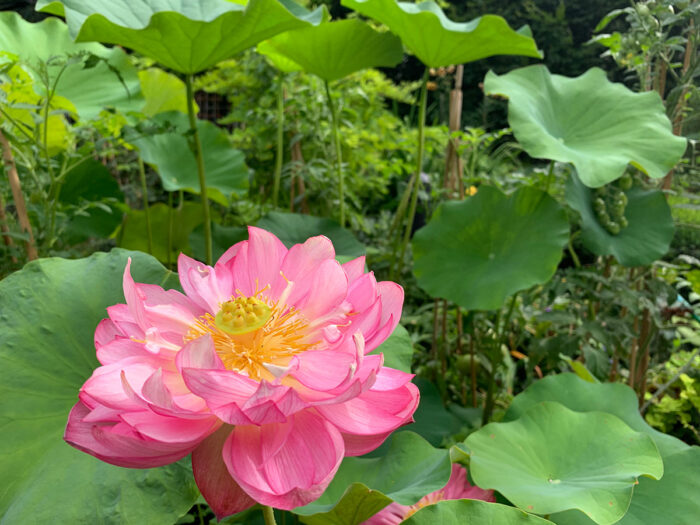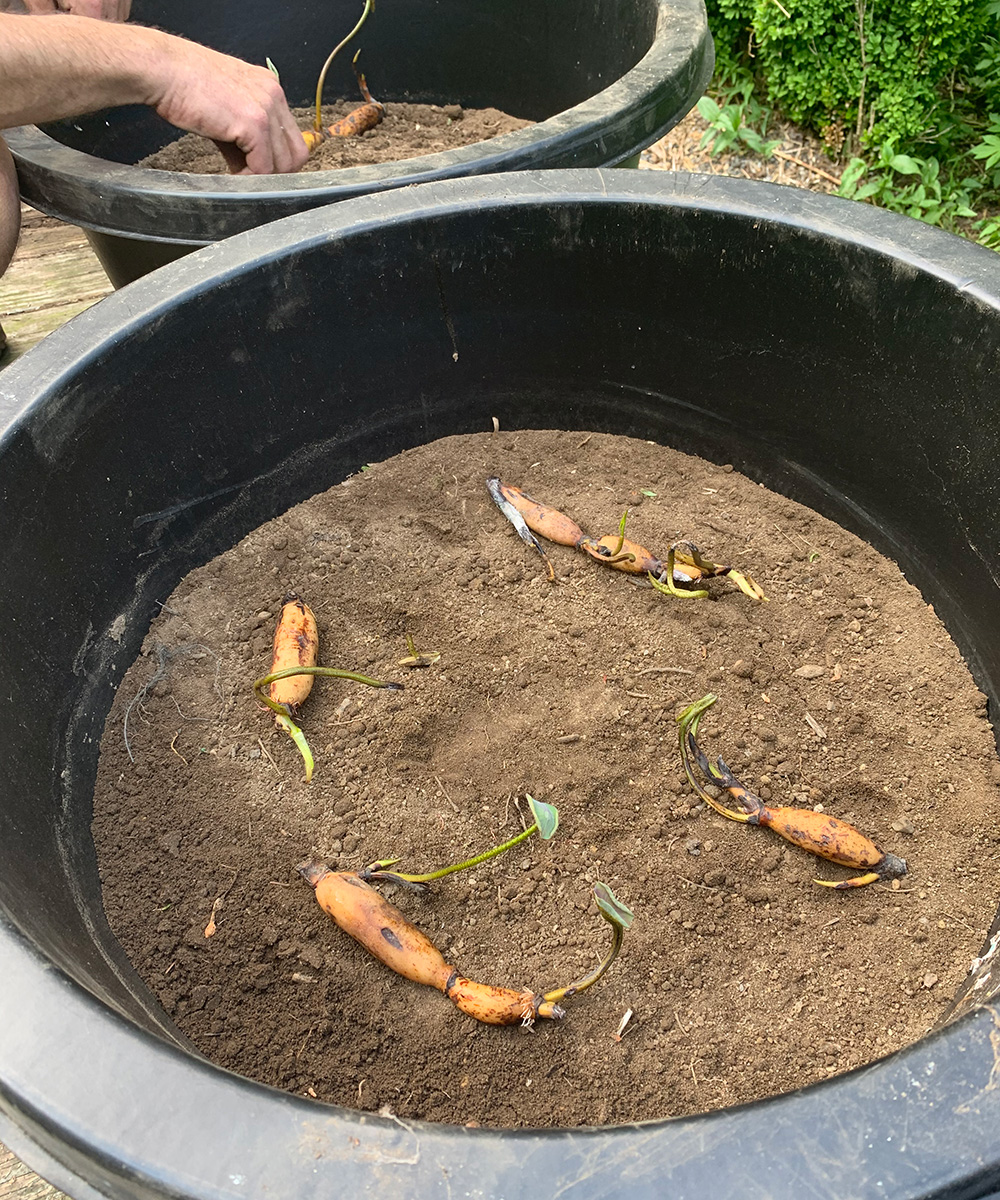How to Grow Lotus in Containers
Take your arrangements to the next level this summer by growing aquatic plants

Growing aquatic plants in containers may seem like something too challenging to attempt, but it is far easier than you may think. Lotus (Nelumbo nucifera, Zones 4–10), a type of water lily, makes one of the most attractive container plants. It offers exotic flowers on tall stalks but also fantastic, tropical foliage that lasts until frost.

A diverse species with wow factor
There is nothing new about keeping lotuses in pots; in China, they have been cultivated in pots since the 10th century. Tubers are easy to find online. There are hundreds of varieties of lotus to choose from. There are exotic double-flowered forms, large singles, and colors that range from deep red to pink to pure white. Don’t underestimate the impact of the foliage, which alone is as beautiful as a floral display. Before you buy, consider the ultimate height of each variety, as lotuses are fast-growing, and not unlike a banana (Musa spp. and cvs., Zones 5–11) or alocasia (Alocasia spp. and cvs., Zones 10–11), they can quickly fill a void. With varieties ranging from true dwarfs no taller than 12 inches to gigantic 6-foot-tall selections with lampshade-size blooms, lotus is worth trying on your deck, doorstep, or out in the garden.

Get creative with containers
Pots needn’t be fancy. I use inexpensive glazed pots purchased at a home design discount store for the smaller varieties, plugging the drainage holes with waterproof silicone. For larger varieties, I like the black plastic 15-gallon livestock feed and water tubs found at farm supply stores; they are deep and inexpensive.
Hardy vs. tropical
Order lotus tubers in early spring for planting out into containers near the frost-free date in your area. There are two types of lotus: hardy and tropical. In the Northeast, both grow fine, and both need some winter protection if grown in a pot, as the tubers do not want to freeze. Hardy lotus can be invasive, even in the Northeast, so never dispose of plants in ponds or waterways.

Getting started
Place regular garden soil (loam) in the bottom of a sealed or waterproof container; 4 or 5 inches is fine. Tubers should be pressed into the top 1 inch of the soil. Most will arrive in the mail with a bit of new growth emerging; take care not to damage the growing end of the tuber (which looks a bit like a ginger root). Set the cut end near the edge of a pot, with the tip pointed toward the middle.
Add companions
Fill pots with water, and keep them topped off as water evaporates through the summer. Introducing duckweed (Lemna spp. and cvs., Zones 4–10), dwarf water lilies (Nymphaea leibergii, Zones 4–11), and other floating aquatic plants helps create a miniature water garden look, and a few mosquito-eating fish from the pet store will eliminate any mosquito larvae.

A season of bold blooms and fierce foliage
Leaves emerge quickly as the water warms up in the sunshine (full to half-day sun is best for flowering). The first flowers appear by mid-July, and plants bloom on and off until frost. You can enjoy the foliage all summer, cut it for arrangements indoors, or even use it for cooking (all parts of lotus plants are edible). Be sure to leave the spent blooms so that the attractive seedpods can form. These can be cut and dried just before frost to use indoors on holiday wreaths or dried arrangements. It’s easy to germinate seeds in spring by floating them in a glass of water.

Overwintering vs. the annual treatment
When growing lotuses as container plants, I treat them as annuals and do not bother to overwinter them. This is because I prefer to try fresh new colors and varieties each year. If you would like to safely store your lotus containers over the winter, drain most of the water out of them and move them to a cool place that doesn’t freeze, such as the corner of an unheated garage or in a cold cellar.
—Matt Mattus is the author of two books: Mastering the Art of Flower Gardening and Mastering the Art of Vegetable Gardening. He gardens in Worcester, Massachusetts.






Comments
Log in or create an account to post a comment.
Sign up Log in